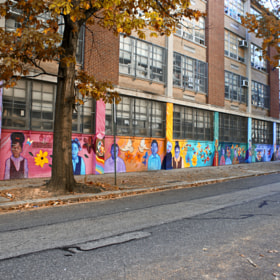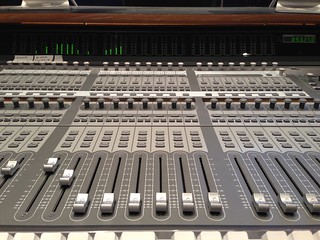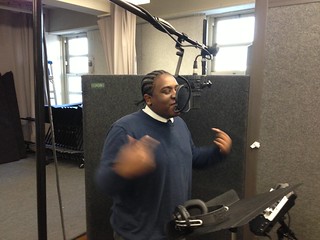The Learning Process: Personal Discoveries, Reflections & Philosphies
 Thursday, March 28, 2013 at 9:39PM
Thursday, March 28, 2013 at 9:39PM Introduction
Whether it was a matter of fate or pure happenstance, my musical journey legitimately began on a drive away from home at the age of 21, on the way to the University of California, Davis. The noted University had just awarded to me a full scholarship to attend and major in Electrical Engineering, with a minor in Mathematics. I had to that point completed three years of undergraduate coursework at a community college located in the San Francisco Bay Area, Los Medanos College. I was required to run the full gamut of required lower-division coursework for engineering, including three full semesters of calculus, physics courses based on these calculus courses, and the standard required courses in the Liberal Arts areas.
Copious amounts of hours were spent studying this material, most memorably studying for the physics finals that lasted eight hours on a Saturday. All the while, I had continued to participate and study music both at the college and on a private basis with a noted jazz trombone teacher.
Music to that point was my great escape from the constant studying and cognitive toll of the mathematics and physics courses. My good friends were all music majors. Little did I know that I was inevitably steering myself upon a career in music.
Musicianship & Development
Undergraduate Studies
Scholarship in hand and en route to UC Davis in my small blue Hyundai Excel, John Coltrane’s “Crescent” suddenly came on the radio and struck me like a ton of bricks. I realized that I could not possibly be serious about life as an electrical engineer. Music had consumed me in my studies, became a part of me. I made the figurative and literal U-Turn right there on the Rio Vista Highway and pointed my vehicle right towards California State University, Hayward.
Cal State Hayward (CSUH) had a vaunted music program that I had always had a profound interest in. They had a renown faculty and an energized student base. The day after the big “U-Turn”, I was accepted directly into CSUH on the merits of my extensive mathematics and physics background. I was accepted as a Music major and my scholarship as a student of music began.
It was a whole new world for me, being an official music major. I was able to divert the thousands of hours I spent on mathematics on physics purely on my instrument and on learning the theories and constructions of Western Music theory. Right off the bat, what engaged me and drew me into the pedagogy of my instructors was their enthusiasm about the concepts and me newfound freedom of being able to study music exclusively.
Dr. Frank LaRoccaThese instructors started off each lecture with tangible demonstrations of the concepts or small historical anecdotes to draw the student in. For example, a great instructor I studied with for 7th semester music theory was Dr. Frank LaRocca at California State Hayward (now East Bay). He came in one day with a story about Debussy and how musical classicists debunked his innovative sketches as “madness” and as “undisciplined”. The lesson proceeded to show us the genius of his compositions for solo piano.
How is that one is able to recall this very specific lesson 16 years after its initial deliverance? Core knowledge and enthusiasm about the subject at hand. These two concepts are key to my own musical pedagogy. I strongly believe that the instructor must not only have a requisite understanding about the content to be delivered to the student, but must also demonstrate further understanding, replete with historical and modern context. Enthusiastically, Dr. LaRocca delivered the lesson on Debussy with a historical perspective. He then demonstrated Debussy’s ingenious use of functional harmony and understatement in a modern setting as part of his own compositions. This created an engaging and relevant musical lesson. More importantly, it created a musical experience that was never to be forgotten by the learner.
I was fortunate enough during my undergraduate years of study to have similar lessons and lectures which were equally memorable. Needless to say, educators and pedagogues of this level weren’t ubiquitous during these formative years. More to the point, instructors who did not demonstrate a core knowledge and enthusiasm about the subject matter had their lessons promptly dismissed as less important and subsequently forgotten, whether consciously or unconsciously. I decided that when I was to get to the level where I myself was an educator, I would always bring a core understanding and excitement to the table when delivering any lesson. I still carry this very important lesson with me when delivering my current music teachings.
Graduate Studies
 NEA Jazz Master Dave LiebmanGraduate school at the Manhattan School of Music in New York brought a similar dichotomy of its instructors and the lectures or lessons or they delivered. One could even argue that it is more evident at the graduate level as it can more easily be determined which teachers are there genuinely to teach or to solely earn the wage that is attached to the teaching. The teachers whose lessons are still a part of my musical identity are those teachers who cared deeply about pedagogy and were true advocates of their arts. Greats like David Liebman and the amazing educator Garry Dial gave lessons and lectures that are still remembered to this day in verbatim.
NEA Jazz Master Dave LiebmanGraduate school at the Manhattan School of Music in New York brought a similar dichotomy of its instructors and the lectures or lessons or they delivered. One could even argue that it is more evident at the graduate level as it can more easily be determined which teachers are there genuinely to teach or to solely earn the wage that is attached to the teaching. The teachers whose lessons are still a part of my musical identity are those teachers who cared deeply about pedagogy and were true advocates of their arts. Greats like David Liebman and the amazing educator Garry Dial gave lessons and lectures that are still remembered to this day in verbatim.
How did these teachers do it? By demonstrated core knowledge, enthusiasm and the time honored tradition of active and engaged instruction. Mr. Dial disseminated the material, whether it was his own specific apparatus of learning pentatonic scales or understanding the concepts of bebop scales and the usage of passing or chord tones. He had a deep understanding of the material and made a specific, individual system for learning the material. This system of instruction had a profound influence on me and would influence my own concepts on delivering material to students. Having an individual and unique system of teaching subject matter is invaluable to both student and instructor. For the student, this system is able to penetrate the learning apparatus and burrow itself into long-term memory. For the instructor, it allows them to demonstrate an individual and unique system of delivering the material and allows them to develop their own specific voice and system of teaching, much like the jazz improvisor produces their own system for musical expression and delivery via improvisation.
Apprenticeship
Eddie PalmieriThe most important lessons I’ve received musically and pedagogically were the lessons that were taught via the time-honored tradition of apprenticeship. My first early apprentice was the great afro-cuban pianist Eddie Palmieri. There can be no stronger lesson taught then one under trial by fire, as it was every time I appeared on the stage with the noted (NEA Jazz) master. I was periodically given looks of disgust and disbelief, looks of “why aren’t you playing this” or “why and the hell are you playing that”. As a young, impressionable and ambitious 24 year trombonist, these experiences were scorched into my musical being and psyche. I would go to the hotel after my performances with head held low, wondering just what I did wrong. In the hotel room, it was hours of watching the ceiling in bed, wondering just what could I have done better during the previous show.
For the learner of music, there are no more impressionable music experiences than these. The next time a particular musical situation arises in a concert, the student will immediately react in the way that is needed based on these experiences. When I am on stage today, my responses to different musical situations are automatic based on those experiences. These experiences place apprenticeship on a platform which, in my opinion, has no pedagogical equal.
Professional Teaching
Inner City Schools
 My first experiences teaching professionally en route to the development of my musical philosophy were in the inner city schools of New York (a vocation I would later return to). Working in tandem with the Midori Foundation, the Coalition/Landmark school in Midtown Manhattan offered students an afterschool program to learn traditional music basics; theory, band ensemble and private lessons.
My first experiences teaching professionally en route to the development of my musical philosophy were in the inner city schools of New York (a vocation I would later return to). Working in tandem with the Midori Foundation, the Coalition/Landmark school in Midtown Manhattan offered students an afterschool program to learn traditional music basics; theory, band ensemble and private lessons.
It was within this setting that I learned the value of customization of a lesson plan to tailor to the specific student whom I was teaching. These kids had short attention spans and, in some cases, a learning disability which warranted an Individualized Education Plan. I would tailor the lesson plans of my students for the day to their specific personalities, warranting marked results in their engagement and overall learning. In the ensemble setting, I transcribed and customized a popular tune of that year, Outkast’s “I Like The Way You Move” so that the beginning-level instrumentalists could perform it. They loved the effort and in turn showed greater engagement in their learning of the material. The public performances were a rousing success, and were a lasting memory to me on just how effective customization of teaching for students can be.
Colleges and Universities
California State University, East BayTeaching in colleges in universities in Seattle and the San Francisco Bay Area offered yet another teaching experience that was highly influential. I was brought on as an adjunct at the University of Washington, Los Medanos College (Pittsburg, CA) and California State University, Hayward to teach Popular Music in American History courses in a lecture format.
These courses warranted a great deal of preparation as I was now presenting material in lecture format to 30-40 college and university students. As teachers at this level can readily attest to, a teacher must always be “on the ball” when disseminating material to students at this level. They are easily distracted and constantly waiting for the teacher to issue wrong information - they want to prove that at this level they themselves have knowledge that they wish to impart on teacher, by way of proving them wrong.
As with any lecture course, a healthy portion of prep before the lecture was always the most successful solution. I also found that student engagement was at its highest levels when I utilized group teaching, online resources, social media, music and movie screenings. Students could put a face or a tangible experience to the people and things connected to the material. They yielded higher test scores and were more apt to remain enrolled in the class.
Development of Musical Philosophy
Real world musical experiences, customization of student lesson plans, development of high levels of student engagement, and the time-honored tradition of apprenticeship have all contributed to the development of my musical philosophy, which I present here in 4 parts:
1. Real World Experiences Must be Propagated in the Classroom
The student must come into touch with real world musical simulations or actual experiences as soon as possible. Thrusting the student into this environment will make them think objectively about creative solutions to the problem at hand and what is requisite to the musical moment. This cultivates a system of meta-learning on the student’s behalf.
2. New Music Education for a New Time
New pedagogical methods reflecting today’s culture and technology must be implemented to keep the student engaged in the content. More specifically, new technologies such as Web 2.0, social media, Youtube, etc. must all be implemented so that the student deems the content being presented as being relevant.
 C24 Pro Tools Mixing Station at Harlem School of Urban Music3. Teaching Music of the Now
C24 Pro Tools Mixing Station at Harlem School of Urban Music3. Teaching Music of the Now
Students must be able to learn in an environment in which music that is relevant to them is being presented. For example, hip-hop can be broken down in a study of musical form, harmony, and melody. The student’s musical concept and expectation has instantly been improved by using this method of pedagogy.
4. Effective Pedagogical Concepts
Students must be actively engaged in order to readily assimilate material. My specific method of teaching, which I prescribe to my current faculty at Harlem School of Urban Music, underlines the concepts of interacting/asking questions to teach musical lessons, learning by doing, “induced discovery” of concepts (which tend to be more readily retained), and strategic parings and groupings of students to encourage a specific outcome.
Full Circle: Designing and Founding the Harlem School of Music
I have been fortunate enough to have been given the opportunity to found an inner-city program which utilizes all of these key pedagogical concepts. In 2010, I began the Harlem School of Urban Music, a program which boasts a first-of-its-kind curriculum in the US by teaching two key concepts utilized in modern music making, production and songwriting, by way of music theory.
Students enter the program on Mondays learning traditional music theory utilizing modern Web 2.0 programs such as Auralia to strengthen ear training and core musical theory concepts including, notes, scales, chords, rhythms, and song form. On Tuesdays, they are thrust into the studio where they learn song sequencing and production on modern music production stations.
The key to the program is that the student has to call upon their knowledge of music theory in order to sequence a song in a Digital Audio Workstation (DAW). Conversely, these music production stations featuring the DAWs help internalize key musical theory concepts.
 Anthony Lee improvises new rhymes @ HSUMTo emphasize the real world experience, I routinely bring in prominent world-class musicians residing in the NYC metro area to share their own musical experiences with the students. These musicians also record in our modern Pro Tools studio with the students assisting, thus making the student and integral part of the production process and leaving the student with an unforgettable experience.
Anthony Lee improvises new rhymes @ HSUMTo emphasize the real world experience, I routinely bring in prominent world-class musicians residing in the NYC metro area to share their own musical experiences with the students. These musicians also record in our modern Pro Tools studio with the students assisting, thus making the student and integral part of the production process and leaving the student with an unforgettable experience.
Conclusion
My experiences as a musician and as a pedagogue have benefitted tremendously in developing a signature style of teaching. Beginning my teaching in the inner-city school, giving lectures college and university, and developing my own program with my specific curriculum implemented has readily demonstrated to me the effectiveness of my pedagogical strategy. Additionally, I have been able to witness how effective my philosophy has been when wielded by faculty at the Harlem School, and how the faculty has naturally taken to this specific teaching style.
 HSUM Faculty Victor Rodriguez instructs the Thursday Engineering/Production classThe end result is that students garner a great excitement about music in general and develop better retention when it comes to key musical concepts. These key concepts are in turn passed onto future students and colleagues as they march onward down the path of our current musical legacy and create their own, well-informed brand of music.
HSUM Faculty Victor Rodriguez instructs the Thursday Engineering/Production classThe end result is that students garner a great excitement about music in general and develop better retention when it comes to key musical concepts. These key concepts are in turn passed onto future students and colleagues as they march onward down the path of our current musical legacy and create their own, well-informed brand of music.
